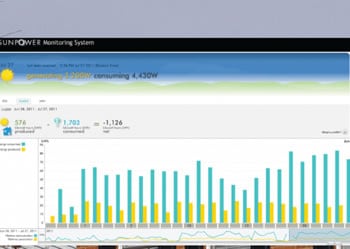Case Study
Homeowner Teaches HOA About Solar Access Law; Successful Compromise Achieved
Project Overview
- Location: Gaithersburg, Maryland
- Completed: July, 2024
- Number of Solar Panels: 18
- Products: SunPower® 225-watt solar panels

Benefits
Eliminates $962.37 per year in energy costs
Earns $1,600 per year from Solar Renewable Energy Credits
Will realize ROI in less than 4 years
Reduce CO2 emissions by 8,513 pounds per year
In June of 2010 the Mirkin family of Gaithersburg, Maryland, submitted their request to the Lakelands HOA Design Review Committee (DRC) to install solar panels on their home. With some education in solar efficiencies, the DRC approved the placement of the solar panels stating that the Mirkin household would lose greater than 20% efficiency if the solar panels were placed on the rear of the home or garage as originally suggested by the DRC.
“The DRC did their homework when it came to solar, solar access laws and solar products” said Geoff Mirkin. “While it was challenging for me to wait on the approval, I could understand their point of view when it came to preserving the aesthetic of the neighborhood.”
Mirkin choose a less obtrusive panel for this reason – overall aesthetic. Solar panel manufacturers have made drastic changes in the aesthetic of the panel, while also increasing panel efficiencies. The Mirkins selected the SunPower® Smart Mount Residential Mounting System, which features high-efficiency solar modules, is architecturally attractive, and incorporates natural ventilation that enables it to maintain its performance.
“The installation itself is clean and pleasing to the eye,” says Mirkin. The dispute was about placement of the panels. The DRC quickly learned how the placement drastically affects savings and earning from a system.
The system has proven itself to save more than was originally expected. In November 2009, Mirkin had an electricity bill of $171.85 as compared to November 2010 of $96.69. That’s a monthly savings of more than $75.